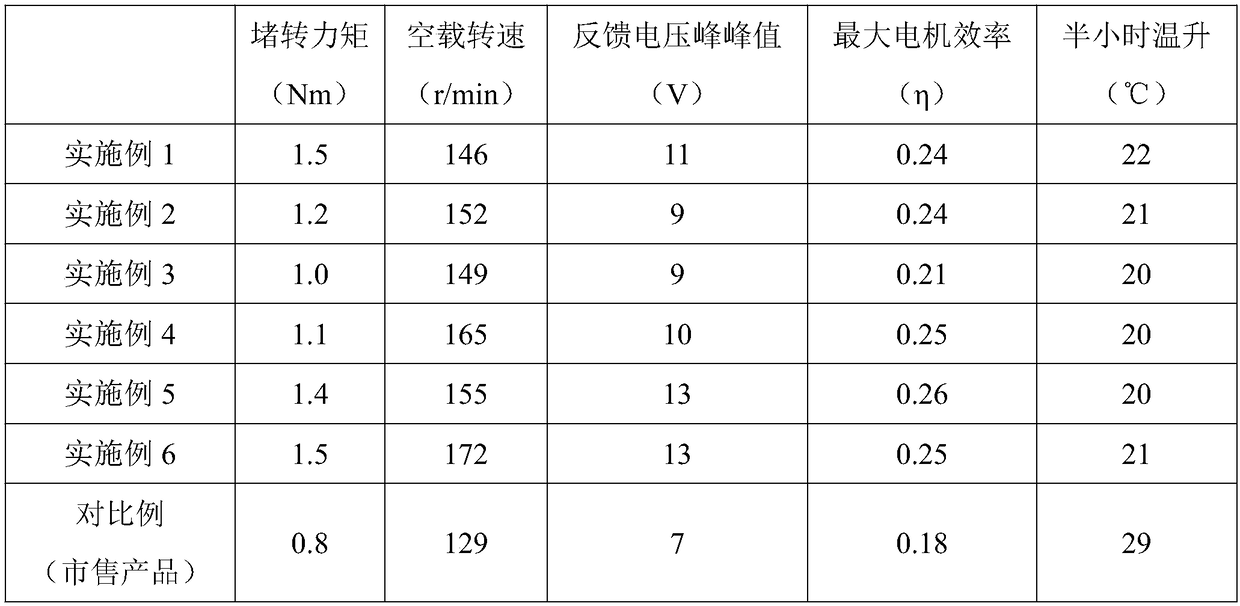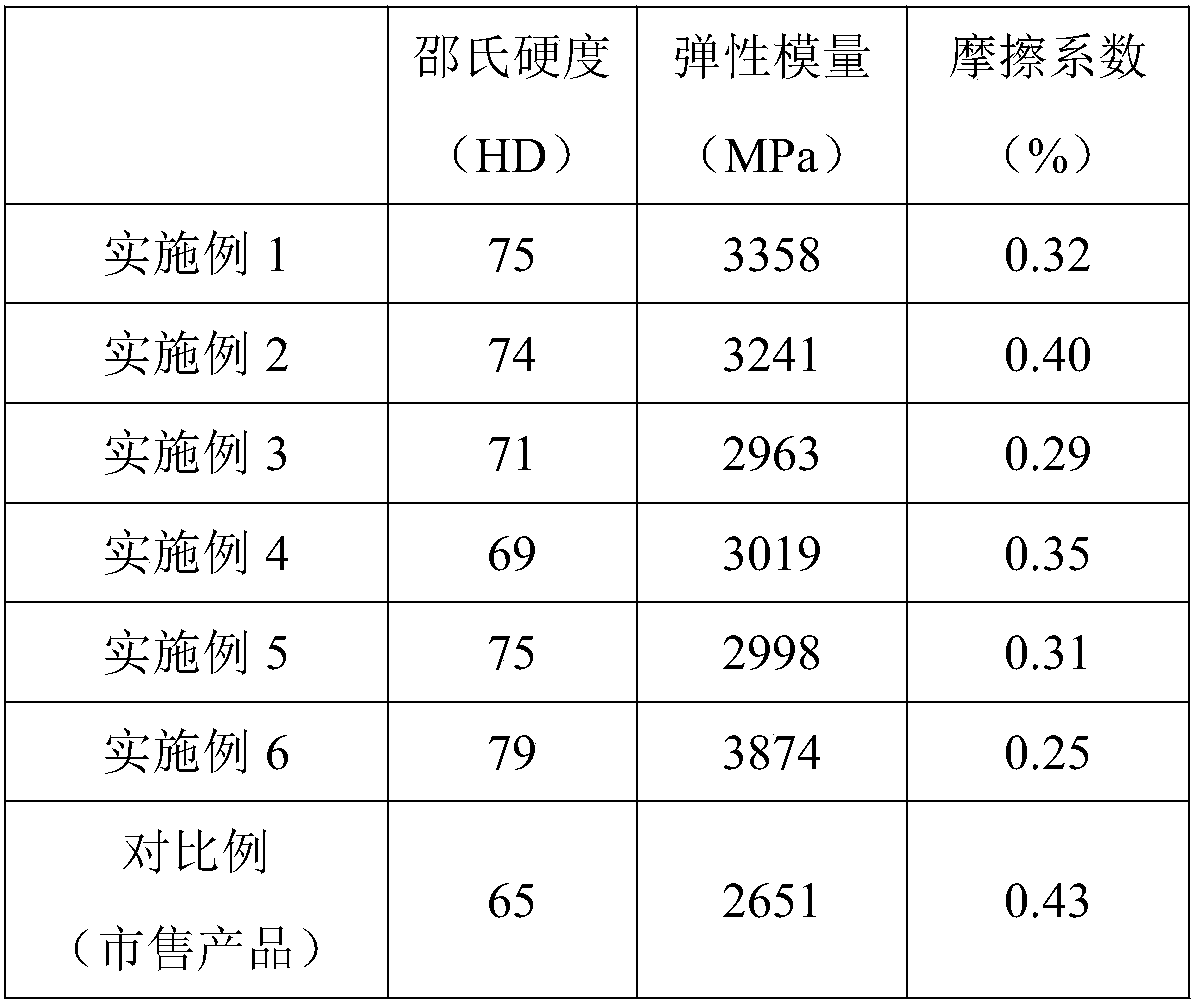Preparation method for polyetheretherketone composite ultrasonic motor alloy friction material
A polyether ether ketone and composite ultrasonic technology is applied in the field of preparation of polyether ether ketone ultrasonic motor alloy friction materials, which can solve the problems of poor stability, insufficient bearing capacity, decreased mechanical properties, etc., and achieve excellent chemical corrosion resistance and guarantee. Dimensional stability, the effect of reducing agglomeration
- Summary
- Abstract
- Description
- Claims
- Application Information
AI Technical Summary
Problems solved by technology
Method used
Image
Examples
Embodiment 1
[0028] 1. Dry polyetheretherketone at 140°C for 100min; polyphenylene at 170°C for 140min; polytetrafluoroethylene at 130°C for 220min; nano-silica at 175°C for 150min; Dry at ℃ for 80 minutes; cool the above dried materials to room temperature for later use;
[0029] 2. Mix the above raw materials in parts by mass: 74 parts of polyether ether ketone; 3 parts of polyphenylene ester; 10 parts of polytetrafluoroethylene; 8 parts of nano silicon dioxide; min, mixing time 50min;
[0030] 3. Use a manual press to cold-press the mixed material in step 2 to preform at room temperature, and set the pressure to 65MPa;
[0031] 4. Put the cold-pressed preformed material in step 3 into a rotary sintering furnace for sintering, the sintering temperature is 395°C, and the sintering time is 25 minutes;
[0032] 5. After cooling the sintered material in step 4 to normal temperature, conduct the test.
Embodiment 2
[0034] 1. Dry polyetheretherketone at 150°C for 120min; polyphenylene at 180°C for 150min; polytetrafluoroethylene at 140°C for 240min; nano-silica at 185°C for 180min; Dry at ℃ for 90 minutes; cool the above dried materials to room temperature for later use;
[0035] 2. Mix the above raw materials in parts by mass: 60 parts of polyether ether ketone; 5 powders of polyphenylene ester; 15 powders of polytetrafluoroethylene; 10 powders of nano-silicon dioxide; min, mixing time 60min;
[0036] 3. Use a manual press to cold-press the mixed material in step 2 to preform at room temperature, and set the pressure to 65MPa;
[0037] 4. Put the cold-pressed preformed material in step 3 into a rotary sintering furnace for sintering, the sintering temperature is 395°C, and the sintering time is 25 minutes;
[0038] 5. After cooling the sintered material in step 4 to normal temperature, conduct the test.
Embodiment 3
[0040] 1. Dry polyether ether ketone at 160°C for 120min; polyphenylene at 180°C for 160min; polytetrafluoroethylene at 140°C for 260min; nano-silica at 185°C for 180min; Dry at ℃ for 90 minutes; cool the above dried materials to room temperature for later use;
[0041] 2. Mix the above raw materials in parts by mass: 60 parts of polyether ether ketone; 8 parts of polyphenylene ester; 10 parts of polytetrafluoroethylene; 12 parts of nano silicon dioxide; min, mixing time 60min;
[0042] 3. Use a manual press to preform the mixed material in step 2 at room temperature by cold pressing, and set the pressure to 70MPa;
[0043] 4. Put the cold-pressed preformed material in step 3 into a rotary sintering furnace for sintering, the sintering temperature is 395°C, and the sintering time is 30 minutes;
[0044] 5. After cooling the sintered material in step 4 to normal temperature, conduct the test.
PUM
 Login to View More
Login to View More Abstract
Description
Claims
Application Information
 Login to View More
Login to View More - R&D
- Intellectual Property
- Life Sciences
- Materials
- Tech Scout
- Unparalleled Data Quality
- Higher Quality Content
- 60% Fewer Hallucinations
Browse by: Latest US Patents, China's latest patents, Technical Efficacy Thesaurus, Application Domain, Technology Topic, Popular Technical Reports.
© 2025 PatSnap. All rights reserved.Legal|Privacy policy|Modern Slavery Act Transparency Statement|Sitemap|About US| Contact US: help@patsnap.com


